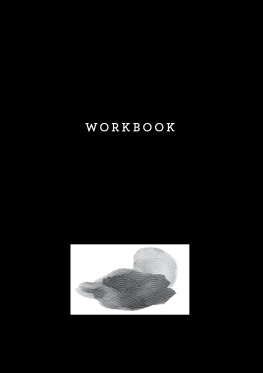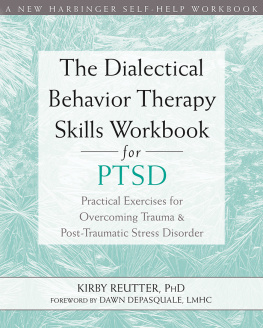Copyright
Copyright 2011 by Bob Delaney
Cover and internal design 2011 by Sourcebooks, Inc.
Cover concept by Susan Spangler
Cover design by The Book Designers
Cover images Keith Levit Photography/World of Stock; Andrey.tiyk/Shutterstock.com
Sourcebooks and the colophon are registered trademarks of Sourcebooks, Inc.
All rights reserved. No part of this book may be reproduced in any form or by any electronic or mechanical means including information storage and retrieval systemsexcept in the case of brief quotations embodied in critical articles or reviewswithout permission in writing from its publisher, Sourcebooks, Inc.
Internal images Aaron Lockwood Photography, p. 304; photo by Cherie Diez, p. 305; courtesy of 9-1-1 Veterans, p. 180; courtesy of Bob Delaney, p. 13, 250; courtesy of Fort Hood Sentinel , p. 294; courtesy of Jan Myers, p. 214; courtesy of Mark Silverberg, Center for Mind-Body Medicine, p. 117; courtesy of Operation Proper Exit, p. 233; courtesy of Quantum Leap Farm, p. 192; courtesy of Ride 2 Recovery, p. 204; courtesy of Sabrina Martin, p. 101; courtesy of The DaSilva Institute, p. 80; courtesy of the Gallagher family, p. 62; courtesy of the Scheiber family, p. 269; courtesy of Vets Prevail, p. 221; Gulnara Samoilova, p. 140; T. Peter Lyons, p. 34; Wayne State University, p. 152
This book is not intended as a substitute for medical advice from a qualified physician. The intent of this book is to provide accurate general information in regard to the subject matter covered. If medical advice or other expert help is needed, the services of an appropriate medical professional should be sought.
All brand names and product names used in this book are trademarks, registered trademarks, or trade names of their respective holders. Sourcebooks, Inc., is not associated with any product or vendor in this book.
Published by Sourcebooks, Inc.
P.O. Box 4410, Naperville, Illinois 60567-4410
(630) 961-3900
Fax: (630) 961-2168
www.sourcebooks.com
Library of Congress Cataloging-in-Publication Data
Delaney, Bob
Surviving the shadows : a journey of hope into post-traumatic stress / Bob Delaney with Dave Scheiber ; foreword by Robert W. Cone.
p. cm.
1. Post-traumatic stress disorderCase studies. 2. Post-traumatic stress disorderTreatment. I. Scheiber, Dave. II. Title.
RC552.P67D455 2011
616.8521dc23
2011019547
Contents
This book is dedicated to all those who serve othersthe men and women of the military, law enforcement, fire departments, and emergency service first responder units and their families. By the nature of the work they do, they are at a higher risk to experience traumatic events and suffer visible and invisible wounds.
Thank you for all you do to make our world a better place.
Bob Delaney, August 2011
Foreword
After nearly ten years of conflict in Iraq and Afghanistan, Americas brave service members continue to bear the many burdens of war. Among these ongoing burdens are Post-Traumatic Stress (PTS) and Post-Traumatic Stress Disorder (PTSD). The persistent exposure to the traumatic experiences of war and other incidents such as the November 5, 2009, shooting at Fort Hood, Texas, has caused cases of PTSD to rise. Unfortunately, identifying those affected, in order to provide them the treatment they deserve, is a significant challenge. We face a continuing dilemma in that the barriers of individual denial or the stigmas associated with admitting behavioral health issues often mask the conditions.
Fortunately, those suffering from PTSD have been given a champion in this causeBob Delaney.
As a victim of the disorder, Bob helped usand continues to help usin breaking through those barriers. I met Bob shortly after November 5, when he came to Fort Hood to meet with soldiers, civilians, and family members and to share his personal experience with PTS from his time as an undercover agent infiltrating the Mafia. His passion for helping others and his personal courage have affected countless victims of PTSD across the nation and overseas.
In my thirty-one years of service, I have come to know that the best thing about the Army is that it is made up of individuals who embody the ideal of service to the nation and to one another. Bob embodies that ideal as well. I am truly grateful to him for his dedication to those who serve. He is a servant in the truest sense of the word. His commitment to the PTSD cause and his genuine care for the military around the world are a testament to his character.
In Surviving the Shadows , Bob not only helps individual victims of PTSD find their way out of the shadows but brings this disorder out of the shadows as well. By telling the stories of other survivors and educating us on the latest medical treatments, Surviving the Shadows provides PTSD sufferers, their families, and their friends a source of hope.
General Robert W. Cone
United States Army
CHAPTER ONE
Post-Trauma Pathways
Dont let life discourage you; everyone who got to where they are had to begin where they were.
Richard Evans
It is impossible to walk the long halls of the Al-Faw Palace in Baghdad without reflecting on the extreme pain and suffering that the man who lived within the marble walls perpetrated.
The sprawling structure rises from placid blue waters that give no hint of the unfathomable terror that festered here under the reign of Saddam Hussein. The surrounding waters not only once served as a protective moat for the compound but also, in accordance with Saddams beliefs, hid the sin inside from the eyes of Allah.
When I arrived at the palace in the summer of 2010, memories of that evil lingeredalong with faded stains of blood in rooms where Husseins henchmen tortured, beyond imagination, those whom they deemed enemies of the regime. But this is where the top U.S. Army command was operating, under the name Camp Victory, orchestrating the battlefield and urban combat strategy for our brave men and women in the armed forces.
I had come on a goodwill tour to the heart of the desert war zone to meet with U.S. troops and officers, just as I had done one year earlier when Id been embedded with ground forces in Mosul. My personal missionwork that has become the guiding force in my lifewas to reach out to people grappling with an unseen enemy from within, Post-Traumatic Stress Disorder (PTSD).
I knew the ravages of this condition firsthand from my undercover duty in the 1970s for the New Jersey State Police, before my second career as a referee in the National Basketball Association. And for nearly twenty-five years, Ive never stopped speaking with and counseling members of law enforcement, the military, and others who have endured psychological trauma in their lives.
That is what brought me into a room that August morning in an upper chamber of the palace, the headquarters of General Ray Odierno, top commander of U.S. forces in Iraqan imposing six-foot-five presence who shares my Jersey roots. The meeting included military staff and Deputy Commander General Robert Cone, who became known to the nation as the commander of Fort Hood during the tragic massacre in 2009.
In less than a week, Vice President Joseph Biden and Secretary of Defense Robert Gates would meet with General Odierno and announce the historic drawdown of U.S. troops in a phase dubbed Operation New Dawn.













